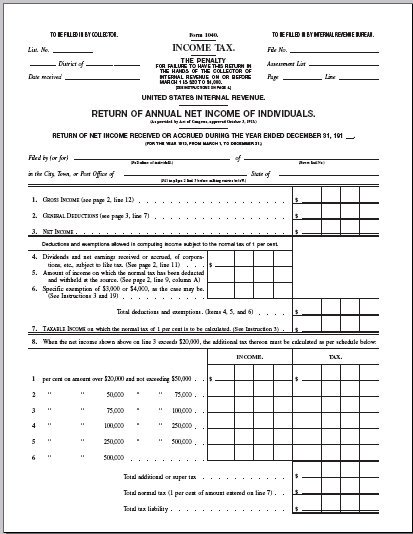The first year of the US Income Tax was 1913. 
Here was that form.
I wish we could rewind the clock.
“In the beginning” when the US federal income tax was first introduced in 1913, it used to be a lot, lot simpler and a lot easier to file taxes; so easy in fact that it was basically like filling out your federal tax return on a postcard.
For example, page 1 of the original IRS 1040 income tax form from 1913 appears above. There were only four pages in the original 1040 form, including two pages of worksheets, the actual one-page 1040 form above, and only one page of instructions, view all four pages here. In contrast, just the current 1040 instructions for 2018, without any forms or schedules,runs 117 pages (forms and schedules are available separately here and here).
Individual federal income tax rates started at 1% in 1913, and the maximum marginal income tax rate was only 7% on incomes above $500,000 (more than $12.8 million in today’s dollars). The personal exemption in 1913 was $3,000 for individuals ($77,000 in today’s dollars) and $4,000 for married couples (nearly $103,000 in today’s dollars), meaning that very few Americans had to pay federal income tax since the average annual income in 1913 was only about $750. The Tax Foundation has historical federal income tax rates for every year between 1913 and 2013 here for tax brackets expressed in both nominal dollars and inflation-adjusted dollars and the 2018 tax brackets are here.
Via AEI